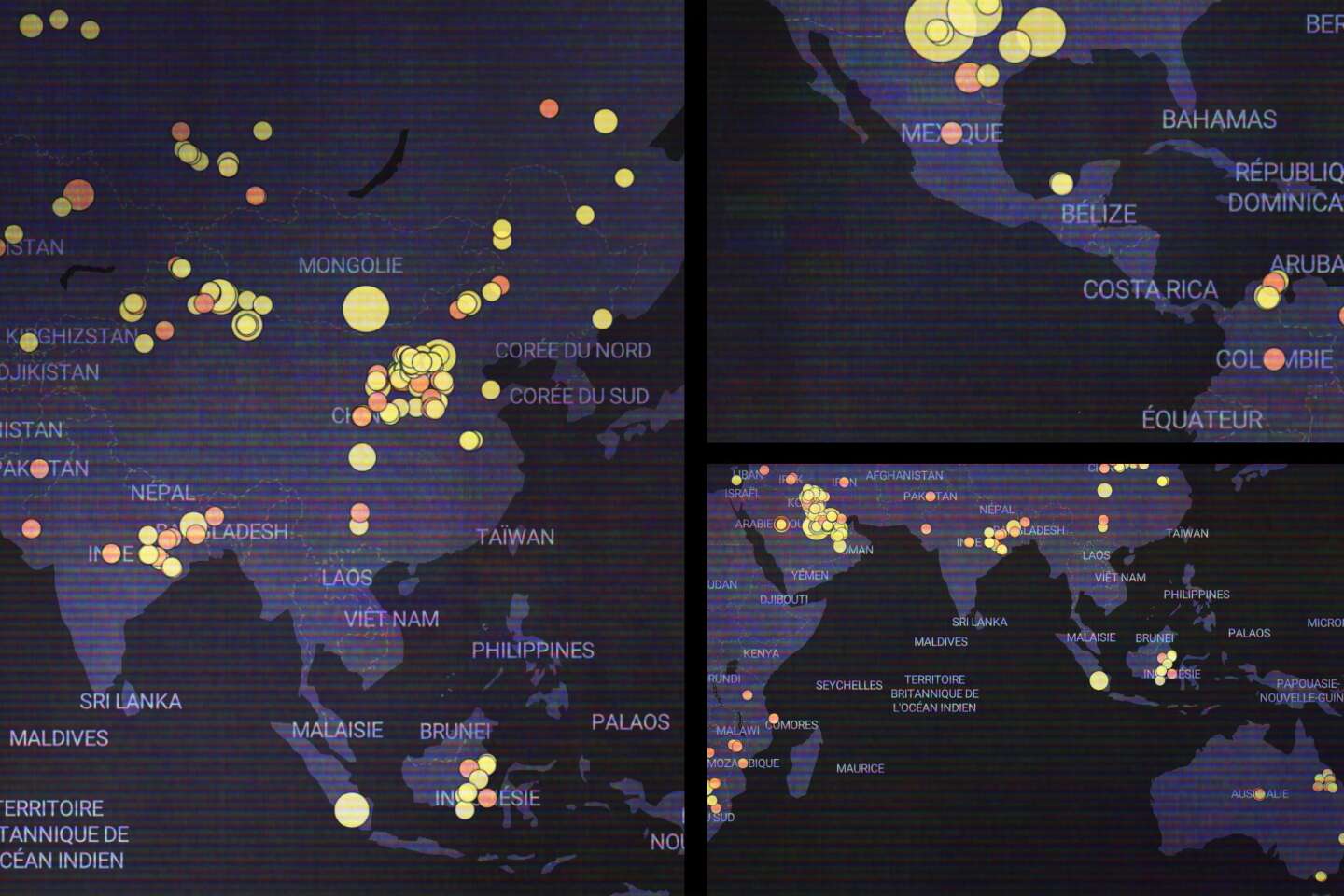Located in every corner of the globe, "carbon bombs" are the fossil fuel extraction projects with the greatest potential for the last CO2 emissions, due to the scale of their known oil, gas and coal reserves. Le Monde invites you to explore these megafields in this map built from data collected for CarbonBombs.org and released on Tuesday, October 31, by the NGOs Data for Good and Eclaircies.
The CarbonBombs.org project aims to catalogue as much information as possible on the hydrocarbon extraction sites with the greatest potential for CO2 emissions worldwide. It was born of the realization that "there is very little reliable public data to identify fossil fuel projects worldwide, their total reserves, associated greenhouse gas emissions and the players involved," explained Oriane Wegner and Lou Welgryn. The co-founders of Eclaircies believe that this is a sign of a "lack of transparency and public information on this subject, which is essential in the fight against global warming."
To remedy this shortcoming, the two French NGOs cross-referenced three public databases and "forged new links to reveal the connections between these carbon bombs, the companies involved and the banks that finance them."
List of 425 deposits
At the heart of this survey is a list of 425 fossil fuel deposits drawn up by a group of researchers in an article published in 2022 in the journal Energy Policy, which popularized the concept of the carbon bomb. The study, led by Germany's Kjell Kühne, a doctor at Leeds University (UK) and director of the Leave it in the Ground NGO, focuses only on sites with available reserves likely to emit at least one billion tons (one gigaton) of CO2 equivalent (CO2e) before running out. This purely symbolic threshold is intended to draw public attention to the highest-emitting sites – but leaves out thousands of other fossil fuel deposits with slightly lower reserves.
The list is a mixture of deposits currently being exploited (294) and extraction projects due to come on stream in the near future (128). Three carbon bombs have been halted since the article was published and are not shown on our map, which is also missing several projects announced over the past year or overlooked by the researchers in their initial review. As some sites could not be precisely located, they appear in the center of the country in which they are located.
The approximate emissions potential of each site should be taken with caution. To calculate it, Kühne and his team used industry-recognized conversion factors, enabling a quantity of oil, gas or coal extracted to be converted into the quantity of CO2e emitted during end use. In the absence of open data on the reserves present in the deposits, the researchers relied on the reference database maintained by the extremely expensive private firm Rystad Energy, to which they were given access free of charge.
Open source logic
As part of CarbonBombs.org, the nonprofits Data for Good and Eclaircies set out to link each of these extraction sites to the companies that operate or own them. In the absence of transparent financial information made available by the fossil fuel sector, volunteers relied on the Global Energy Monitor Wiki, an open-source encyclopedia of fossil fuel projects maintained by an American NGO. Although very comprehensive, it is not exhaustive, and in some cases "underestimates the number of projects associated with a company," admitted Oriane Wegner and Lou Welgryn. It also sometimes contains out-of-date information.
All that remained was to shed light on the financial players behind these companies. To do this, CarbonBombs.org relied on the "Banking on Climate Chaos" report, which each year lists the main financial flows between the world's major banks and the energy sector. While this work, carried out by NGOs, is criticized in its methodology by banking establishments, it is considered one of the best sources of information on the subject, due to a lack of transparency on the part of the main stakeholders. "Today, opacity complicates the debate and plays into the hands of the financial players who continue to finance pollution. Making information available in a clear and accessible way would go a long way toward accelerating the transformation of the financial sector," explained Lucie Pinson, director of Reclaim Finance, one of the NGOs behind the report.
Because of these methodological barriers, this aggregation work provides a rich but non-exhaustive view of the web of players involved in carbon bombs. "CarbonBombs.org is intended to be continuously enriched in the future, to refine and update information on projects, companies and their financing by banks," said the co-founders of Eclaircies, who added that it has been designed according to the logic of open source, "with the desire that the progress of some can be reused to advance those of others, and to enable citizen ownership of this subject."



